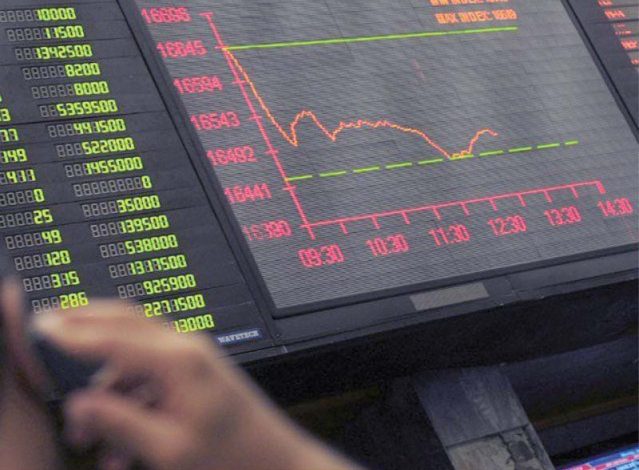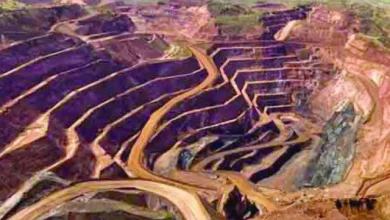KSE-100 merely slowing down after climb

Over long term, stock market has delivered average annual returns of 15-20%, dividends and capital appreciation
Activity was mainly led by interest in oil stocks; bourse ends week just shy of 43,000
KARACHI:
It has been less than six weeks since the KSE-100 index touched its peak levels of 170,000, and it has only fallen by about 6-8% since then. Yet investors have already started jittering, panicking, and losing hope.
People conveniently forget that the market is up nearly 60% in the last five months and more than 100% in the past 12 months before finding a new level that reflects its long-term “valuation” range of around 8x price-to-earnings (P/E). A company earning Rs1 a year is trading at a value of Rs8.
Very good companies with strong outlooks are trading 20-25% below their recent peaks, thereby creating nervousness among new or weak investors with short-term horizons. But don’t forget that over the long term, Pakistan’s market has delivered average annual returns of 15-20%, including dividends and capital appreciation on a weighted average basis in the KSE-100.
Many asset managers, influencers, and advisers quote inflated figures based on bottom-to-peak returns, but true performance should be assessed from bottom-to-bottom or peak-to-peak in dollar terms. Investors must realise that equity is just another asset class suited to one’s risk profile – not a shortcut to mint money.
Long-term investors always win because time in the market beats timing the market. Surprisingly, gold as an asset class has also performed tremendously well in Pakistan over the past few decades, reaffirming the wealth-building power of consistent saving and patient compounding. Therefore, the new equity investors who entered the market in the last three to six months must ask themselves a few honest questions before becoming impatient.
If they switch back to money market or cash funds, their after-tax returns would hardly exceed 7% per year – roughly equivalent to the rupee’s long-term depreciation against the US dollar. In essence, such investors merely maintain their value in PKR terms but lose real value in USD due to inflation.
Why investing in stocks is better than buying property
Buying property requires large cash flows in millions, involves documentation fees, corruption, asymmetric information, risk of defective titles, litigation issues, and continuous maintenance. Property cannot be sold fractionally, you cannot diversify easily, and you face constant tenant negotiations, rent disputes, and broker fees.
The stock market was created to solve all those problems. You can diversify instantly across companies, sectors, and risk levels, and – with just a click – sell part or all of your holdings within two working days. That liquidity and flexibility make equity investment one of the most efficient and transparent wealth-building avenues available to ordinary citizens.
Stock market gives ownership, liquidity, diversification and freedom
While installment-based housing may seem disciplined, it still lacks the flexibility, transparency, and diversification that equity markets provide. Stock investing allows you to choose your preferred companies and risk profile, earn dividends from cash-rich firms, and benefit from capital appreciation – all while monitoring performance daily.
With further digitisation, enhanced investor awareness, better corporate governance, and the SECP’s decision to allow under-18 investors, Pakistan’s market is becoming a gateway for financial independence. Young investors can now start building portfolios early, experience real-world finance, and compound wealth over decades – something no other asset class enables as effectively.
The earlier you invest, the longer your money works for you
While the current consolidation in the KSE-100 may keep values range bound for months or even a few quarters, it’s not a sign of weakness. The index remained flat around 11,000 in 2012 and 40,000 in 2016, yet today it stands multiple times higher. A few months of stagnation is simply a pause before the next phase of growth. I personally believe the index may touch 9x P/E and approach 200,000 within the next six to nine months.
This is the time to accumulate shares gradually and compound your assets. Learn why you are investing in each company. Understand their business models, prospects, and management quality. Diversify sensibly, avoid excessive leverage or penny stocks, and focus on high-quality growth names. Stick with them unless they lose direction or discipline.
It’s perfectly fine if the market stays sideways due to geopolitical concerns, delays in privatisation or NFC award, or tensions with Afghanistan or India. Every dip in a fundamentally strong stock is a buying opportunity – and each decline only increases your upside potential. So, stay calm, stay invested, and let time do its magic.
The KSE-100’s story is not over – it’s evolving, and those who keep faith in fundamentals, discipline, and long-term compounding will write the next chapter of their financial success. Though we are still in the era of 3% GDP growth rate but the trend line is moving upwards so should your financial faith in the markets.
The writer is an independent economic analyst



